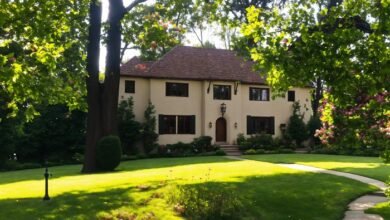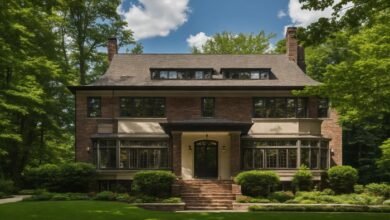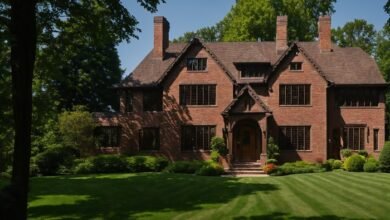Le Belle Turf: A Comprehensive Guide to Elegant Lawn Care

Introduction
Maintaining a beautiful lawn is more than just regular mowing and watering; it’s an art. Le Belle Turf is the epitome of this art, offering a blend of aesthetics and functionality to transform any outdoor space into a lush, green oasis. In this comprehensive guide, we will explore the essence of Le Belle Turf, its benefits, and how to achieve and maintain it.
What is Le Belle Turf?
Le Belle Turf refers to the practice of cultivating and maintaining a beautifully manicured lawn that not only looks visually appealing but also provides a functional space for relaxation and recreation. The term “Le Belle Turf” is derived from French, emphasizing the elegance and sophistication associated with this approach to lawn care.
Choosing the Right Grass for Le Belle Turf
The foundation of Le Belle Turf lies in selecting the appropriate type of grass. Different grass varieties thrive in different climates and soil conditions. For instance, Bermuda grass is excellent for warm climates, while Kentucky bluegrass is ideal for cooler regions. Ensuring you choose the right grass is crucial for achieving the lush, green look characteristic of Le Belle Turf.
Soil Preparation for Le Belle Turf
Before planting your grass, it’s essential to prepare the soil properly. Le Belle Turf requires nutrient-rich soil with good drainage. Conduct a soil test to determine its pH and nutrient levels. Amend the soil with organic matter, such as compost, to improve its structure and fertility. Proper soil preparation ensures that your turf has a healthy foundation to grow on.
Planting Techniques for Le Belle Turf
Planting your grass correctly is vital for establishing Le Belle Turf. You can choose to seed, sod, or sprig your lawn. Each method has its benefits and challenges. Seeding is cost-effective but requires more time to establish, while sodding provides instant results but is more expensive. Sprigging is a middle-ground option. Regardless of the method, ensure even distribution and proper watering during the establishment phase.
Watering Practices for Le Belle Turf
Watering is a critical aspect of maintaining Le Belle Turf. The goal is to provide consistent moisture without overwatering. Deep, infrequent watering encourages deep root growth, making your turf more drought-resistant. Use sprinklers or drip irrigation systems to ensure even water distribution. Adjust the watering schedule based on seasonal changes and rainfall patterns.
Mowing Tips for Le Belle Turf
Regular mowing is essential to keep Le Belle Turf looking neat and healthy. Set your mower blades to the correct height for your grass type to avoid scalping or stressing the turf. Mow frequently enough to remove no more than one-third of the grass height at a time. This practice encourages dense growth and prevents weeds from establishing.
Fertilization Strategies for Le Belle Turf
Fertilizing your lawn provides the necessary nutrients for robust growth. Le Belle Turf benefits from a balanced fertilization schedule, typically involving a combination of nitrogen, phosphorus, and potassium. Apply fertilizer during the growing season, following the recommendations based on your grass type and soil test results. Avoid over-fertilization, which can harm your lawn and the environment.
Weed and Pest Control for Le Belle Turf
Weeds and pests can quickly ruin the appearance of Le Belle Turf. Implement a proactive weed control strategy by using pre-emergent herbicides and regularly inspecting your lawn for any weed growth. For pest control, identify common lawn pests and use appropriate treatments. Integrated pest management (IPM) techniques can help minimize chemical use while effectively managing pests.
Sustainable Practices for Le Belle Turf
Sustainability is an integral part of Le Belle Turf. Reduce your lawn’s environmental impact by adopting eco-friendly practices. Use organic fertilizers, implement efficient watering systems, and choose native grass species that require less maintenance. Composting grass clippings and using natural pest control methods also contribute to a more sustainable lawn care routine.
Seasonal Maintenance for Le Belle Turf
Maintaining Le Belle Turf requires different approaches throughout the year. In spring, focus on fertilization and weed control. Summer requires diligent watering and mowing. Fall is the time for aeration and overseeding to repair any damage from the summer heat. Winter involves protecting your turf from frost and preparing it for the upcoming growing season. Adapting your lawn care routine to the seasons ensures a healthy, beautiful lawn year-round.
Conclusion
Le Belle Turf is not just about having a green lawn; it’s about creating an outdoor space that enhances the beauty of your home and provides a serene environment for relaxation. By choosing the right grass, preparing the soil, and following proper maintenance practices, you can achieve a lawn that is both elegant and sustainable. Embrace the principles of Le Belle Turf and enjoy the rewards of a pristine and sophisticated lawn.
FAQs
1. What is the best grass type for Le Belle Turf in a warm climate?
Bermuda grass is ideal for warm climates due to its heat tolerance and robust growth.
2. How often should I water Le Belle Turf?
Watering frequency depends on the climate and soil type, but deep, infrequent watering is generally recommended.
3. Can I use organic fertilizers for Le Belle Turf?
Yes, organic fertilizers are an excellent choice for maintaining a healthy and sustainable lawn.
4. What are the benefits of aerating my lawn?
Aeration helps improve soil structure, enhances nutrient absorption, and promotes healthy root growth.
5. How can I prevent weeds in Le Belle Turf?
Implementing a proactive weed control strategy, including using pre-emergent herbicides and regular lawn inspections, can help prevent weeds.





